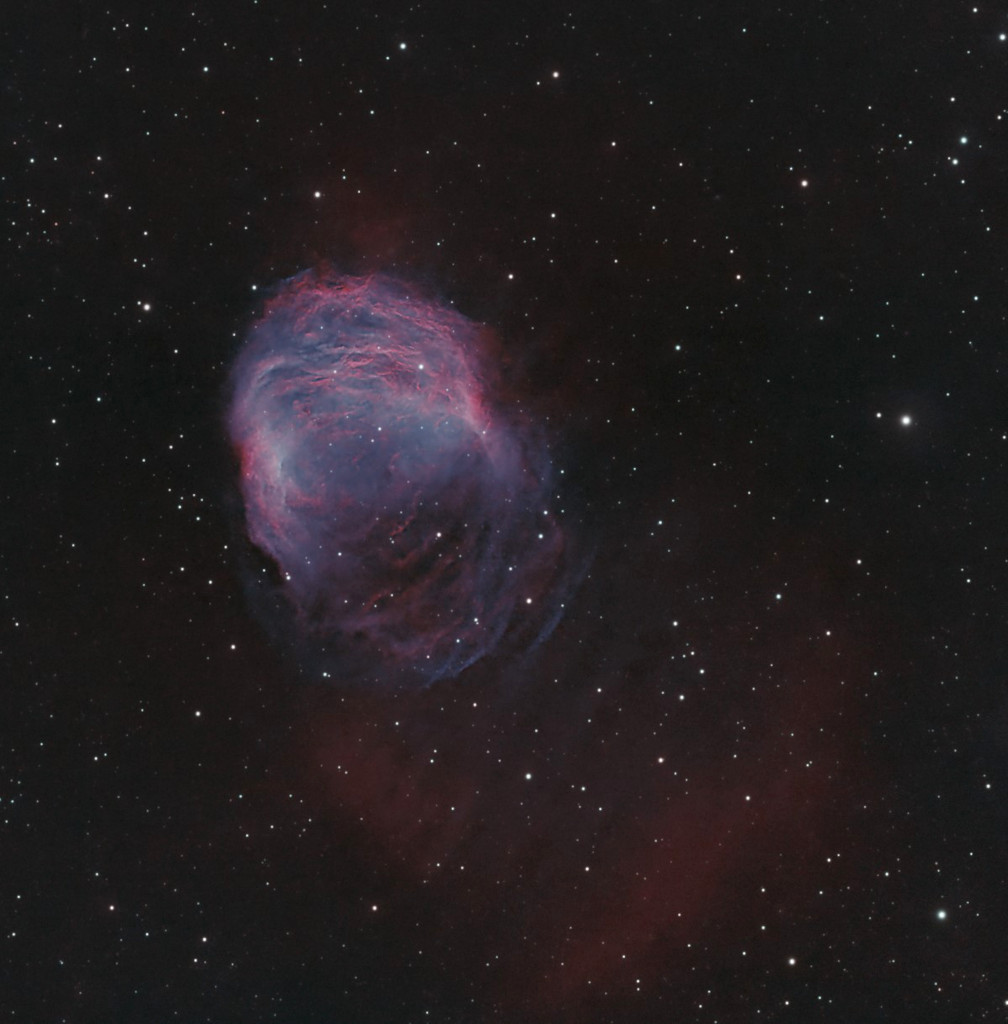안녕하세요, 잡학다식 입니다. 오늘은 과연 나사에서 어떤 방식으로 우주의 형상을 표현해 줄까요?
우선 이미지부터 볼 수 있도록 하겠습니다

해당 사진의 이름은 The Medusa Nebula 인데요 우선 NASA에서 공식적으로 발표한 설명들을 확인해 보겠습니다
Braided and serpentine filaments of glowing gas suggest this nebula's popular name, The Medusa Nebula. Also known as Abell 21, this Medusa is an old planetary nebula some 1,500 light-years away in the constellation Gemini. Like its mythological namesake, the nebula is associated with a dramatic transformation. The planetary nebula phase represents a final stage in the evolution of low mass stars like the sun as they transform themselves from red giants to hot white dwarf stars and in the process shrug off their outer layers. Ultraviolet radiation from the hot star powers the nebular glow. The Medusa's transforming star is the faint one near the center of the overall bright crescent shape. In this deep telescopic view, fainter filaments clearly extend below and right of the bright crescent region. The Medusa Nebula is estimated to be over 4 light-years across.
이번에도 광활한 우주 앞에 인간이 얼마나 작은 존재인지 다시 한번 알게 되는것 같습니다
저는 내일도 더 좋은 사진과 함께 돌아오겠습니다, 그럼 행목한 하루 되시길 바랍니다
'과학상식' 카테고리의 다른 글
| NASA 나사의 오늘의 이미지들 (2023-03-19) (0) | 2023.03.20 |
|---|---|
| NASA 나사의 오늘의 이미지들 (2023-03-18) (0) | 2023.03.19 |
| NASA 나사의 오늘의 이미지들 (2023-03-16) (0) | 2023.03.17 |
| NASA 나사의 오늘의 이미지들 (2023-03-15) (0) | 2023.03.16 |
| NASA 나사의 오늘의 이미지들 (2023-03-14) (0) | 2023.03.15 |